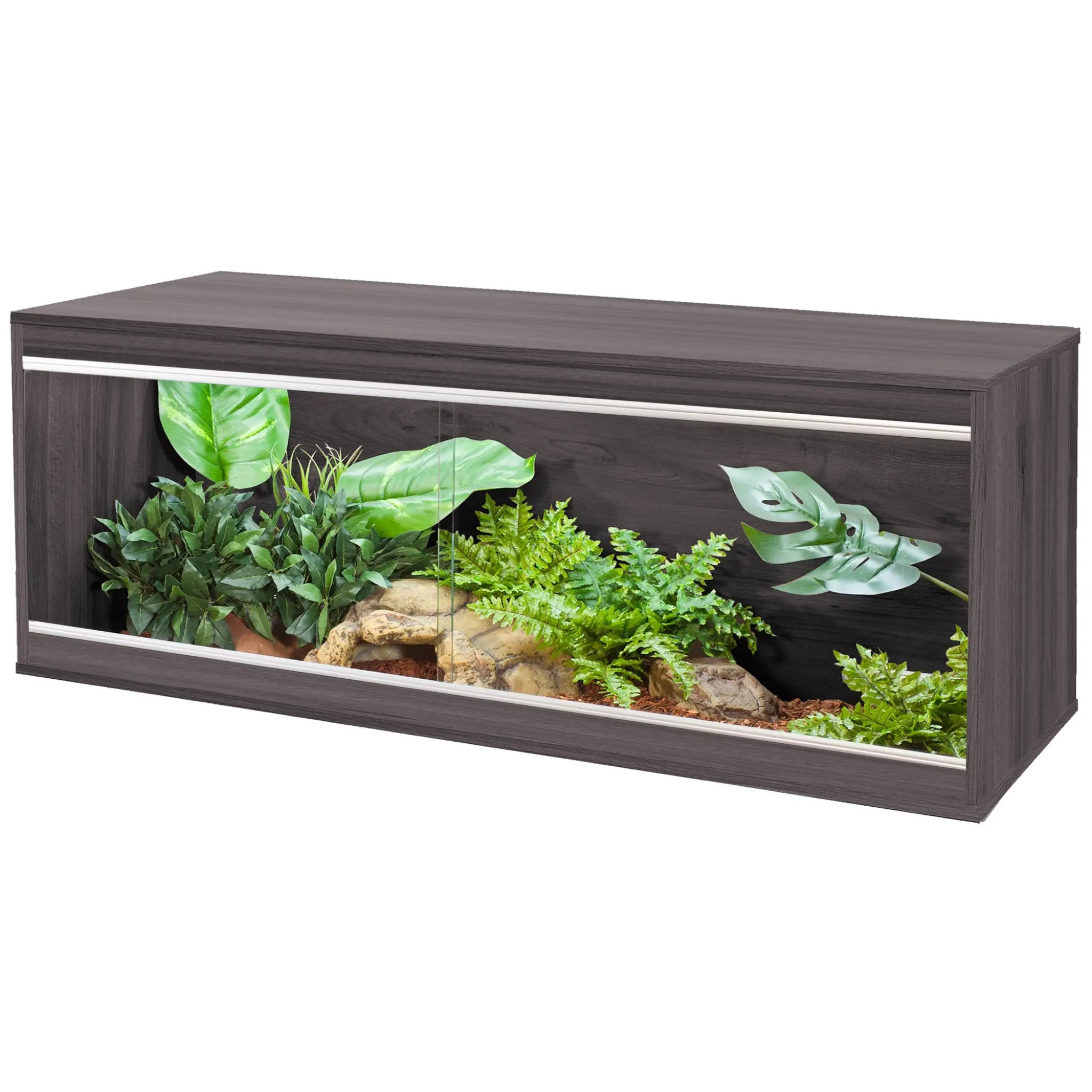Free Delivery
On order over £99*



Protocol in association with vetinary professionals

Preparation: getting the tortoise ready for hibernation

Hibernation: what to monitor during the tortoise hibernation

Waking Up: how to bring a tortoise safely out of hibernation

Video: video guide of tortoise hibernation protocol

Considering hibernating your tortoise in the colder winter months? For the most part, pet tortoises don’t necessarily need to hibernate in captivity, as they usually have proper living environments, whether they sleep on a tortoise table or in a vivarium.
That said, it is possible to buy or create a tortoise hibernation box to help them go through this natural process. There are just a few things to consider, such as their age, their species, their health and ensuring that your tortoise is hibernating correctly.
Lastly, it’s important to check with your local veterinarian before hibernating your pet tortoise. But for now, keep reading as we explore all you need to know about tortoise hibernation.


Simply put, hibernation is a period that wild animals undergo to survive the cold weather. Hibernating species go through reduced metabolic activity during this time where their heart rate slows, core body temperatures drop and breathing becomes shallow.
Hibernation can last for several months as animals rely on stored fat reserves to survive. That said, in captivity, hibernation isn’t as necessary. But it can be a way to ensure your tortoise lives a happy and healthy life.
Across the world, tortoises go through the hibernation process in order to survive the colder winter months. Now, although as pets, our tortoises don’t generally need to hibernate due to ideal heating, lighting and housing – many owners choose to hibernate their tortoises as a way of replicating their natural annual life cycle.
It’s incredibly important to consider the types of species that you have as only certain species of tortoises need to hibernate. These include:


It’s very important to consider various factors before hibernating a tortoise. This is because hibernation is not suitable for all tortoises, especially if they are a certain species, age, weight and condition.
If you’re going to hibernate your tortoise, make sure to check they don’t include the following characteristics.
Some species of tortoises do not need to hibernate. This is especially true if they do not hibernate in the wild. For example, tropical tortoises, such as a leopard tortoise and a red-footed tortoise and some desert tortoises, such as African spurred tortoises, do not hibernate.
Your tortoise should be at least two or three-years-old before hibernating. Of course, this is a general rule and you should always do an extensive health check with an experienced vet before letting your tortoise go through the hibernation process. We generally recommend hibernating your tortoise after you have owned it for at least 12 months.
It’s very crucial to consider the health of your tortoise before hibernating. If a tortoise is sick or has underlying health conditions, then you should not hibernate them, as they may not have optimal metabolic function or enough stored energy reserves.
Additionally, make sure that your tortoise doesn’t have any worms or parasites. As such, they may not survive the month-long hibernation period and are more likely to die during this period.
If you have an underweight tortoise, you absolutely should not hibernate them. Small tortoises that hibernate with insufficient fat stores are unlikely to endure hibernation.
In contrast, a tortoise with too much body fat could also run into issues. To measure your tortoise’s weight, you can put small tortoises on top of a garden pot on a kitchen scale. Alternatively, you can calculate your tortoise’s weight by stepping on a bathroom scale with and without the tortoise and then subtracting the difference.
If all of this sounds like too much effort, you can always visit a local vet who has experience with tortoises and hibernating species. They will more than likely have the correct equipment to weigh your tortoise and advise you about their suitability for hibernation.


Okay, now that you know a bit more about the background of tortoise hibernation dos and don’ts, here are a few things to consider about tortoise hibernation periods.
For 2 weeks before hibernation, keep your tortoise's daytime temperature above 24ºC. The tortoise needs to hibernate without any food in its stomach, so do not feed during this time. Bathe your tortoise daily in tepid water to stimulate the tortoise to defecate and clear the gut of waste.
Spend a further 1-2 weeks placing your tortoise in cooler locations by switching off its heating, then moving it to cooler rooms. Hibernation should be between 2ºC and 10ºC, the ideal temperature is 5ºC.
Weigh your tortoise and record its weight. Place your tortoise inside a box that is slightly larger than itself and put in some shredded paper. Put the small box into a larger box and surround it with shredded paper.
Place the whole thing in a temperature-controlled environment, such as an incubator or a ventilated refrigerator. Insulating the boxes will reduce the impact of any temporary temperature fluctuation, but it will not prevent freezing if the temperature drops below 0ºC.
PS: Please remember that if you do hibernate a tortoise this way, store it in a separate fridge to avoid contamination of your food and drinks.
Throughout the hibernation period, always regularly check that the temperature within your fridge is a steady 5ºC.
Check the weight of your hibernating tortoise every week. Don’t allow your tortoise to lose more than 1% of its initial weight each month. For example, on a 500-gram tortoise, allow 5 grams to be lost each month. If your tortoise loses too much weight, bring it out of hibernation immediately.
Hibernate a two-year-old tortoise for one month, a three-year-old for two months and anything else for three months only. You should never hibernate your tortoise for more than three months. If your tortoise urinates while in hibernation, warm it up right away and seek veterinary advice.
Top tip: If it’s your first time hibernating your tortoise, try two weeks and increase it annually, depending on the species.
Remove your tortoise from the refrigerator. Allow it to slowly come up to room temperature during the day before returning it to their heated vivarium or table. Your tortoise will now happily bask at over 24ºC.
You should offer some tortoise food and fresh green vegetables now, as your tortoise should be hungry.
Bathe in tepid water every day to ensure your tortoise is well hydrated. If your tortoise is not drinking or eating within the first week, contact a veterinarian immediately.


This is our 'How to hibernate your tortoise safely' video.
It is a complete guide that will show you how we advise to safely hibernate tortoises at Northampton Reptile Centre. It is based on our tortoise experience accumulated over our 20-year history and our collaboration with exotic vet Jeremy Wright. This is the guide that makes hibernation easy.
We have a range of supplies for tortoises, including food, vivariums, tortoise tables and tortoise substrate. Additionally, we have over 20 years of experience working with reptiles and amphibians, so we can assist you with any queries you may have about ownership, including hibernation.
Just like us, we’re sure you love your pets, so it’s vitally important that you check with the necessary professionals, such as your vet before you hibernate your tortoise. It can be a tricky process and it’s not always easy to know what to do. Of course, if you are still left with any questions, please do not hesitate to contact us.
Sign up to the Reptile Centre newsletter so you don't miss out on all the latest offers and guides to give your pet the best they deserve

